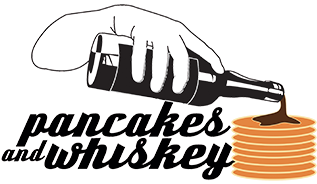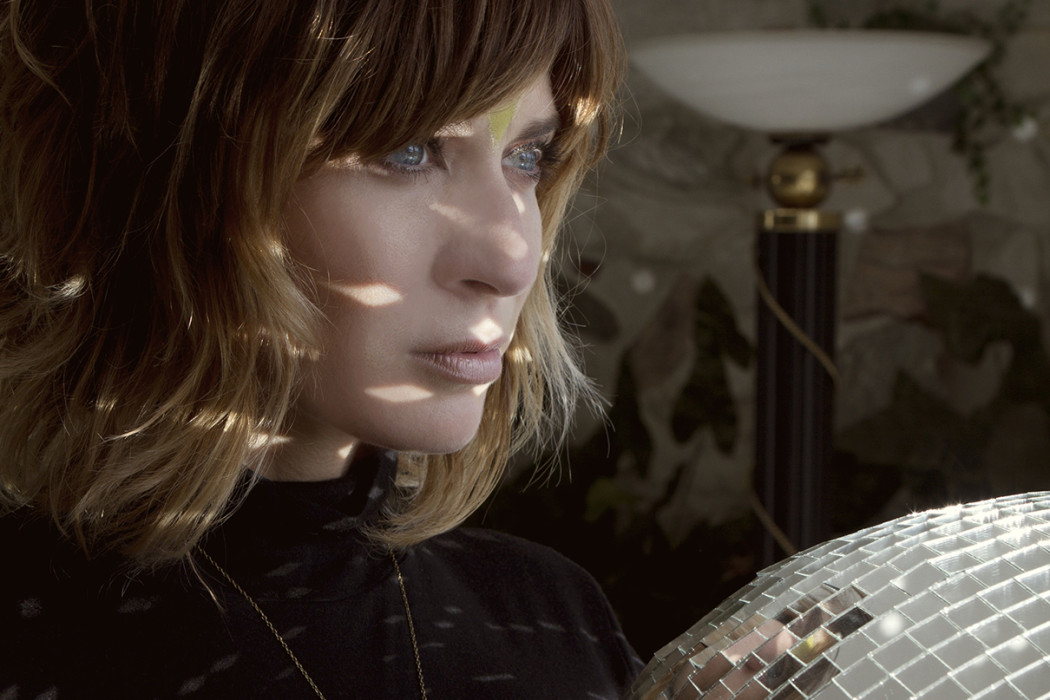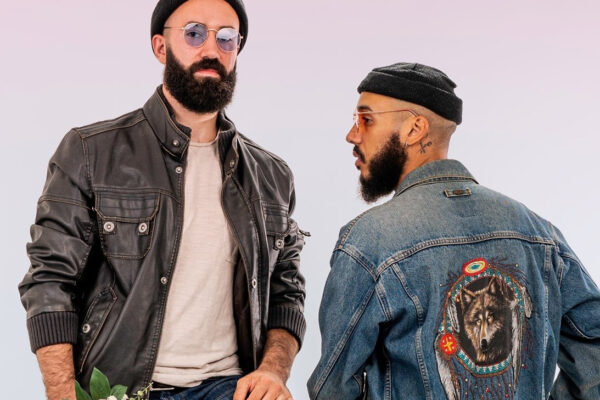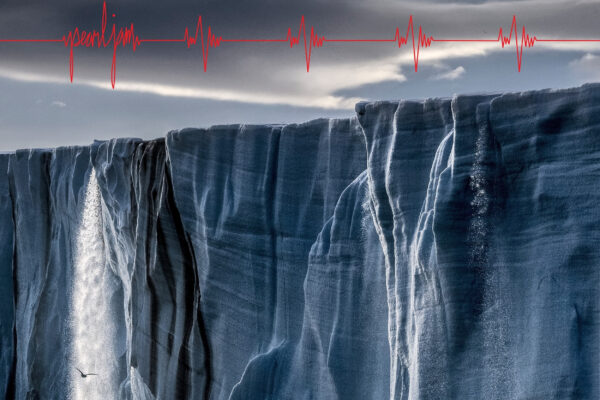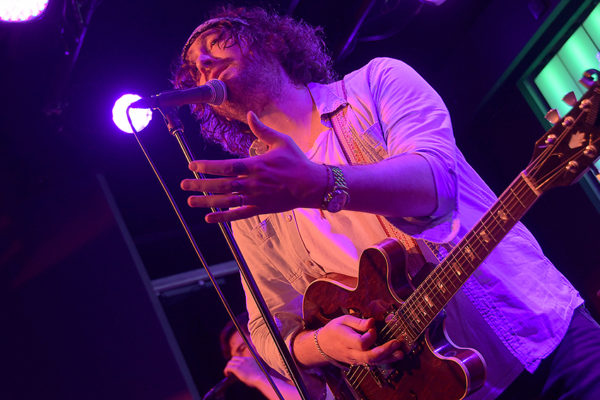New Jersey born musician Nicole Atkins sings with an unrelenting conviction, routinely conveying all of life’s blissful radiance and debilitating darkness within the confines of a single note. Throughout her recording career, Atkins has produced striking compositions that provoke the listener, purposely guiding them towards an entirely new state of mind. Neptune City, Mondo Amore and Slow Phaser exist as chronological documents of an artist in a constant state of evolution, quietly navigating creative development with all of the joy and humility of a musical journeyman. A gifted storyteller and arranger, the performer’s own propensity for crafting bold, consuming melody is often the very thing that attracts her to the music of her contemporaries.
During a telephone conversation with Pancakes and Whiskey, Atkins sifted through her personal record collection, happy to reveal some of her most treasured albums that have stuck with her and never gone away. Tomorrow the Green Grass by the Jayhawks and Mark Lanegan’s Bubblegum are two that she considers sacred, although it’s Regina Spektor’s album, Songs, that reminds Atkins of her own time spent in New York in the early 2000s.
“I could still listen to that and when you put it on, I’m immediately back in the East Village, 2001, being like, “Yeah, life is going to rule one day, maybe” (laughs).
When asked to name the most obscure or surprising artist or album in her collection, the performer laughingly searched for the weirdest stuff she could find, before naming Pharoah Sanders Live at the East and declaring her love for a band she never thought she’d like.
“I have a lot of beard rock in here…I have the Best of Bread and I actually really love it.” After describing the disgust she felt as a child after hearing her mom say she loved the Bread song, “I Want To Make It With You,” Atkins laughed before stating, “And then I found a Best of Bread record and I put it on and I was like, “Wow, these songs are great!”
Mirroring the twists and turns of her own discography, the singer-songwriter’s record collection highlights an appreciation for nearly every category of music. Although it is her last studio album, Slow Phaser, that most joyously reflects those influences.
You’ve said that you began singing as kid almost by accident, and that at one point you didn’t think you could sing. How did you begin to find the notes and teach yourself how to sing?
I did musical theater and I used to just sing songs on MTV and stuff for friends and family. And I just always thought you had to be a soprano in order to be a good singer. You know, as you can see I have a very deep voice (laughs).
Then I saw the movie Beaches (laughs). This is so nerdy! I saw the movie Beaches with Bette Midler and “The Glory of Love,” and she belted out, and I was like, “Oh, I can sing like that.” Also, I was doing theater so I got really into Jesus Christ Superstar and the Joe Cocker, Mad Dogs and Englishmen record and just started singing like that. And then I was like, “Wow!” It wasn’t that I had a good voice, but I had a unique voice.
You grew up in New Jersey but you really started your career in North Carolina. How would you say the music scenes differ and what was it about North Carolina that made you feel at home artistically?
When I was in North Carolina, I went to college there. And all of my friends, we would just sit and drink and play guitar until all hours of the night. And everybody that was from there was really into Americana music and old country music, and there’s just this real communal vibe with everybody. The whole rock and roll, southern country rock culture was a good intro scene into learning how to write your own songs.
So that’s what it was. Instead of people going out to bars and to parties and just being a bunch of people standing in a room with cups, we were people going to each other’s houses and just playing music all night.
In the past, you’ve talked about a North Carolina record store you used to visit in college. Do you remember the first vinyl you bought at that store?
You know what? I didn’t start collecting vinyl until I graduated college.
Oh, really?
Yeah. When I graduated college it was the summer of 2001, and I went to a garage sale and got a record player. There was a record store called Sound Waves in Manasquan, New Jersey. They just had all of these crates underneath the CDs of old vinyl that you could get three for ten bucks, they were like picture discs. The first record I bought was a Gram Parsons bootleg called Another Side of This Life, where he covered Buffy Sainte-Marie and Fred Neil songs.
That’s really cool.
Yeah, it was cool- I still have it.
You take a lot of inspiration for your work from your dreams. To me and a lot of other people, dreams are so hard to grasp once you’ve woken up. It reminds me of something Paul McCartney once said, which is if he or John Lennon weren’t able to write down an idea and then later on they couldn’t remember it, they both figured it wasn’t worth remembering.
Yeah, that’s right.
And if it wouldn’t stick in their head, then it wouldn’t stick in a listener’s head. Do you feel the same way?
Definitely, I definitely come from that school. If I have a melody in a dream or an idea in a dream, it will wake me up immediately where I have to get it down. And if it doesn’t compel me to get out of bed and walk over to the table, it’s cool, I can keep sleeping (laughs).
You’ve previously stated that your songwriting today is, “more experience, less fear.” What has allowed you to shed that self-consciousness?
I think it’s just, you know, getting older. When you first start out, you’re so uptight about everything. Everything needs to be perfect and fit into this exact mold of what you want to put out there. And lately, I’m just having all of these quirky or weird melodies.
Like I had this idea for a song the other day, it was like a sixties Beach Blanket Bingo musical meets a Belle and Sebastian song meets a doom metal chorus. I’m like, “What the fuck is this?” (laughs). And you know, back in the day I would have been like, “Ok, I’m not going to finish that because it doesn’t make sense.” But now, I’m starting to get more comfortable with the ideas that come to me. They make sense to me, and that’s really all that matters right now (laughs).
Slow Phaser has a very theatrical quality to it, but at the same time it’s very grounded and never favors style over substance. When you’re in the studio, how difficult is it to strike that balance sonically?
I think it’s pretty easy for us, and the people I work with just because we’re never trying to do a specific style. We’re just trying to mainly serve the melody and the words. We’re never like, “Ok, let’s make a psychedelic album.” There’s different touches of genres that we want to add on it, but its only if it serves the lyrics or the melody. So those are the things that come first.
It’s always jarring to walk into a recording studio because it looks more ordinary than you think it would.
Yeah it depends on which studio you go to…one I worked at was so weird looking (laughs).
Oh, yeah? (laughs). Well I always feel like you see that ultimately, it’s just another place where people go to work- it’s not some alternate dimension where theres vibrant colors and creative things just sort of happen. Part of what makes Slow Phaser so striking is that it is really successful at capturing a very specific mood and atmosphere. What does your studio look like and how do you create that atmosphere for yourself when you’re recording?
The last record I did, that was in Tore Johansson’s studio in Malmo, Sweden. The way that his studio is, it looks like an old houseboat on the harbor. And there’s just literally, crazy old instruments strewn everywhere. So it’s like a crazy mess, but it’s really inviting.
There are different pillars and platforms with spiral staircases that have a mellotron on top of it, or a unicorn-horn with a gong. So you’re kind of insulated… It’s like somebody bombed fraggle rock (laughs).
A lot of the songs have an almost futuristic vibe to it, “Who Killed The Moonlight,” in particular. To me, that’s the most experimental song on the album. Is there a reason you chose it as the album’s opening track?
It just sounded like the opening. When I think of my albums, I think of them as mini-movies. And so, how do you invite the listener in? That seemed like the most inviting of all the tracks.
You’ve said that going into recording sessions for the new record, you had a couple hundred songs that didn’t get used. Do you think some of those songs will ever resurface on future releases?
Yeah, sometimes you have these songs and they just don’t work for what you’re doing at the time. Then years later, they can pop back up. It’s funny that you asked that, because that happened last night. I was going through my computer and it was being really slow, and I’m cleaning it off and I’m like, “Whoa! Forgot about this song…wait- this song’s awesome!” And remembering that I fucking hated that song three years ago, you know? And now I like it. So sometimes ideas come to you when it’s not their time, but you can go back.
You recently announced on social media that there is a Slow Phaser Deluxe Edition coming soon that features a live show. What has it been like to take this record out on the road?
Oh, it’s been great. It’s the best time I’ve ever had touring, ever. And the cool thing was too, when we did the Nick Cave and the Bad Seeds tour, they asked if we could only do the show with a maximum of three people onstage. I was like, “Wait I just made this album that’s super bass heavy and how do I do that?” (laughs). But we rearranged the songs and they totally work, and they work in a way that is actually more exciting to be watching onstage. So that’s been a real breath of fresh air into my touring life.
And when we were doing it too, we were like “Shit, we want to remember this and we want to have a momento of it and we want people to hear how different these songs sound live, and not say that they’re better but they’re different and they’re just as good.”
You’ve said that going through Hurricane Sandy reinforced the idea of music as a permanent thing in life, saying that “music is something you can make that will always be there and it will never go away.” Do you ever think about your music in terms of legacy?
You know, I think about dying all the time, to be honest (laughs). I’m always just thinking like “Man, I have all these ideas.” You know, sometimes they’re for songs or sometimes they’re for artwork or I want to make a musical or I want to, I don’t know, fucking paint shit on my jeans (laughs). Whatever it is, I just want to make as much stuff as I can before I die. I never think of it as “Oh, my legacy,” but I just think I don’t want to waste anything I have in the time that I have here.
Slow Phaser Deluxe Edition is available in stores now
Don’t forget to see Nicole Atkins at Philadelphia’s World Café Live on 12/18 and check back with Pancakes and Whiskey for coverage of the show
Article by: Caitlin Phillips
